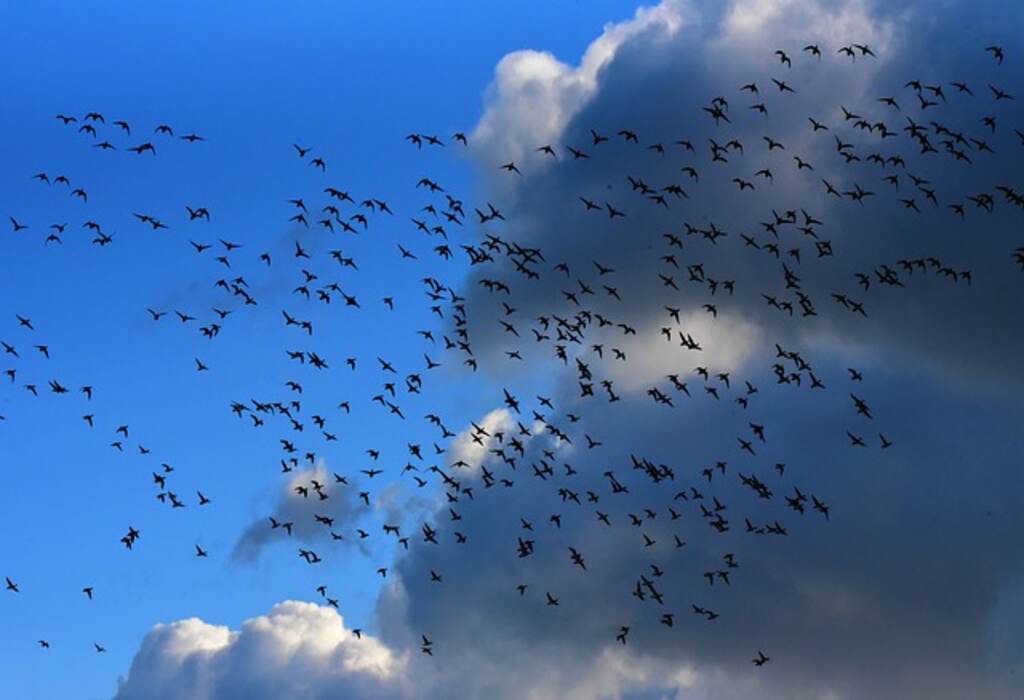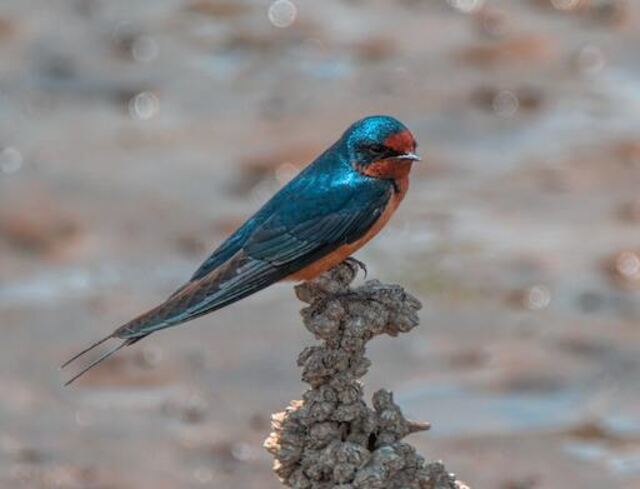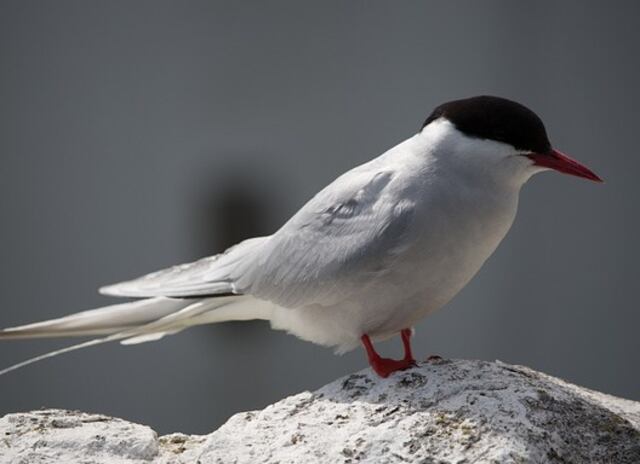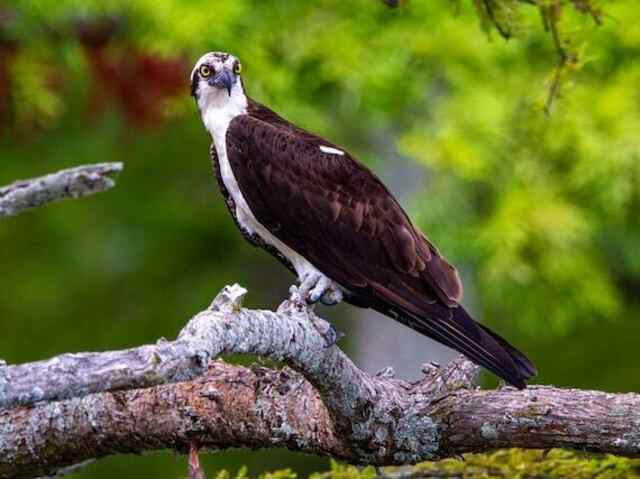Bird migration is an awe-inspiring phenomenon that sees millions of birds embark on incredible journeys each year. The UK is home to a wide variety of migratory bird species, from tiny songbirds to majestic raptors. Understanding the patterns and habits of these birds is key to appreciating their importance to our ecosystem and preserving their habitats.
In this guide, we will provide a detailed overview of which birds migrate from the UK, their migratory routes, and the challenges they face. We’ll also explore the importance of conservation efforts and the exciting opportunities for birdwatching that arise during migration season.
Table of Contents
- 1 Key Takeaways:
- 2 Which Birds Migrate from the UK?
- 3 Understanding Bird Migration
- 4 Common Migratory Bird Species in the UK
- 5 Migration Paths and Routes
- 6 Bird Migration Patterns in the UK
- 7 Notable Migratory Bird Species in the UK
- 8 Challenges and Conservation Efforts
- 9 Birdwatching Opportunities
- 10 Interesting Facts About UK Bird Migration
- 11 Conclusion
- 12 FAQs: Which Birds Migrate from the UK?
- 13 Author
Key Takeaways:
- Learn about the migratory patterns of UK bird species
- Understand the challenges migratory birds face and the importance of conservation efforts
- Discover prime locations for birdwatching during migration season
Which Birds Migrate from the UK?
Many bird species migrate from the UK every year, with approximately half of the UK’s bird species undertaking these journeys. Some of the most well-known migratory birds in the UK include swallows, house martins, swifts, chiffchaffs, willow warblers, spotted flycatchers, blackcaps, redstarts, common sandpipers, and Arctic terns.
These birds travel to various destinations across Africa, Europe, and Asia, among other regions. The migration patterns of these birds are an important part of their life cycle and are essential for their survival.
Understanding Bird Migration
Many bird species in the UK are migratory, meaning they travel to different regions and countries during different seasons. Migratory birds in the UK typically travel south in the winter months and north in the summer months, following the availability of food and optimal breeding conditions.
Bird migration is a complex and fascinating phenomenon that has puzzled biologists for centuries. Each year, millions of birds undertake epic journeys spanning thousands of miles, navigating through varying climates, terrains, and hazards.
The reasons behind bird migration are not fully understood, but scientists believe that it is driven by a combination of factors, including environmental cues, genetic programming, and evolution. For many migratory birds, their survival and reproductive success depend on their ability to migrate.
The Factors Influencing Bird Migration in the UK
The migratory patterns of birds in the UK are influenced by several factors, including:
- Day Length: Birds use changes in day length as a signal to start or end their annual migration. As the days get shorter in the fall, birds begin to migrate southward. In the spring, as the days get longer, birds head back north to their breeding grounds.
- Food Availability: Birds migrate to areas where food is abundant and accessible. For example, many birds that breed in the UK migrate to Africa during the winter to take advantage of the rich sources of insects and other food.
- Climate: The weather conditions, such as wind patterns and temperature, can affect migration routes and timing. Birds may alter their migration routes to avoid extreme weather conditions or take advantage of favorable winds.
- Magnetic Field: Many birds are able to sense the Earth’s magnetic field and use it as a navigational tool during migration. They may also use landmarks, such as mountain ranges or coastlines, to help them find their destination.
Understanding these factors and how they influence bird migration is crucial for conservation efforts and protecting the habitats that migratory birds depend on.
Common Migratory Bird Species in the UK
The UK is home to a variety of bird species that migrate to different parts of the world in search of food, breeding grounds, or favorable climates. Here are some of the most common migratory bird species in the UK:
| Bird Species | Migratory Routes | Destination |
|---|---|---|
| Barn Swallow | Europe, Africa, Asia, Australia, South America | Sub-Saharan Africa, Asia, Australia, South America |
| Common Swift | Europe, Africa, Asia, Australia | Sub-Saharan Africa, Asia, Australia |
| Common Cuckoo | Europe, Africa, South Asia, Southeast Asia, Australasia | Sub-Saharan Africa, South Asia, Southeast Asia, Australasia |
| Osprey | Europe, Africa, Asia, Australia, North and South America | North and South America |
| Arctic Tern | Europe, Africa, Asia, Australia, North and South America, Antarctica | Arctic and Antarctic regions |
These migratory bird species have adapted to travel long distances in search of optimal living conditions. Some species travel thousands of miles across continents and oceans, while others migrate shorter distances within Europe. Their migratory patterns are largely influenced by factors such as food availability, weather conditions, and breeding cycles.
It’s worth noting that not all bird species migrate from the UK. Some, such as robins or wrens, are resident birds and stay in the UK year-round. Others, such as the blackbird, may only migrate short distances within the UK during winter.
Common Garden Birds that Migrate from the UK
Aside from the aforementioned species, some common garden birds also migrate from the UK:
- Chaffinch
- Goldcrest
- Blackcap
- Brambling
- Siskin
- Redwing
- Fieldfare
These species may visit gardens in the UK during migration periods, providing birdwatchers with the opportunity to observe them.
Understanding which birds migrate from the UK and where they go can help us appreciate the complexities of bird migration and the importance of protecting their habitats. By promoting conservation efforts, we can ensure the survival of these migratory bird species in the UK and beyond.
Migration Paths and Routes
When it comes to bird migration in the UK, there are various paths and routes that birds take when leaving the country. One of the most notable is the Eastern Atlantic Flyway, which takes birds across the Atlantic Ocean from Europe to West Africa. Other flyways that birds use include the East Asian-Australasian Flyway, the Central Asian Flyway, and the Americas Flyway.
Along these flyways, there are numerous stopover points where birds rest and refuel before continuing on their journey. Some of the most important stopover points include the Wadden Sea, the Camargue, and the Banc d’Arguin National Park in Mauritania.
It is worth noting that the routes taken by migratory birds can vary depending on factors such as wind patterns, food availability, and weather conditions. This makes tracking and studying these routes a challenging but important endeavor, as it helps us understand the complex and ever-changing patterns of bird migration.
Bird Migration Patterns in the UK
Bird migration in the UK follows a distinct pattern, with different species arriving and departing at different times throughout the year.
In general, autumn is the peak season for bird migration in the UK, with large numbers of birds leaving the country to spend the winter in warmer climates. Spring sees the return of these migratory birds, as they flock back to the UK to breed and raise their young.
However, climate change and other environmental factors have begun to impact the traditional patterns of bird migration in the UK. Some species are arriving earlier in the year, while others are arriving later or not at all. This disruption can have far-reaching consequences for both the birds and the ecosystems they inhabit.
Understanding bird migration patterns is crucial for conservation efforts, as it enables experts to track changes and identify potential threats. By monitoring migratory bird populations, researchers can gain insight into the health of specific habitats and take action to protect them.
Changes in Migration Patterns
One of the most significant changes in bird migration patterns in the UK is the earlier arrival of some species. In recent years, researchers have observed that some birds, such as the swallow, arrive in the UK up to two weeks earlier than they did just a few decades ago. This trend is likely linked to the effects of climate change, as warmer temperatures and changing weather patterns alter the timing of seasonal events.
However, not all birds are arriving earlier. Some species, such as the pied flycatcher, are arriving later in the year or not at all. This may be due to a range of factors, including changes in weather patterns, habitat degradation, and food availability. Whatever the cause, these changes highlight the fragility of migratory bird populations and the need for conservation efforts to protect their habitats and ensure their survival.
The Importance of Migration Patterns
Bird migration patterns provide vital information about the health of ecosystems and the impact of environmental changes. By tracking the movements of migratory birds, scientists can gain insight into habitat quality, climate trends, and other factors that affect the health of wildlife populations.
In addition, understanding migration patterns is essential for conservation efforts. By identifying key habitats and migration routes, experts can take targeted action to protect these areas and promote the survival of migratory bird populations. This may include habitat restoration, conservation education, and the implementation of protective measures such as bird-friendly architecture and power line markings.
Overall, bird migration patterns in the UK are complex and ever-changing. But by studying and understanding these patterns, we can work to protect and preserve the natural beauty and diversity of our landscapes and ecosystems for generations to come.
Notable Migratory Bird Species in the UK
Each year, a wide variety of bird species leave the UK in search of better feeding grounds, breeding sites, and milder weather. Here’s a closer look at some of the most notable migratory birds:
The Swallow
The swallow is easily recognizable for its striking blue wings, red throat, and long forked tail. These agile birds cover long distances, flying from the UK to Africa for the winter and back again in the spring. Swallows usually build their nests in barns, sheds, and other man-made structures.
The Blackcap
Blackcaps are known for their mellifluous, flute-like song, which is particularly striking during the breeding season. These small warblers migrate from the UK to Western Europe and North Africa for the winter. Interestingly, some blackcaps have started to overwinter in the UK, likely due to the warmer winters caused by climate change.
The Willow Warbler
The Willow Warbler is one of several species of warbler that migrates from the UK to Sub-Saharan Africa for the winter. They are a bright olive-green color and have pale underparts and a distinctive yellow eyebrow. Willow Warblers are typically heard before they are seen, thanks to their clear, melodious song.
Other notable migratory bird species that leave the UK include the Arctic Tern, the Cuckoo, and the Redstart. Each of these birds has unique adaptations and behaviors that enable them to survive the long, perilous journey to their wintering grounds.
Challenges and Conservation Efforts
The migratory journey of birds is fraught with various challenges that can have negative impacts on their survival. In the UK, migratory bird species face significant challenges such as habitat loss, climate change, and hunting. These challenges have led to a decline in migratory bird populations, with some species disappearing altogether.
Conservation Efforts
Fortunately, there are various conservation efforts in place to protect migratory birds in the UK. These efforts include creating protected areas, such as nature reserves and wildlife refuges, where birds can rest and feed along their migration routes. Additionally, there are regulations in place to limit hunting and protect certain bird species from human activities.
Conservationists also work to restore and create habitats that are essential for migratory birds. These efforts include planting native vegetation, restoring wetlands, and removing invasive species that can negatively impact bird habitats.
The Importance of Conservation
Preserving migratory bird habitats is crucial for the survival of both the birds and the ecosystems they inhabit. Many migratory bird species play important roles in regulating insect populations and distributing plant seeds, making them essential for maintaining healthy ecosystems.
Moreover, migratory birds are a crucial part of the UK’s natural heritage and contribute to the country’s rich biodiversity. By protecting these birds and their habitats, we can ensure that future generations continue to enjoy the beauty and wonder of bird migration in the UK.
Birdwatching Opportunities
Witnessing the beauty of bird migration in the UK is a once-in-a-lifetime experience. To make the most of this spectacular event, you need to know the right places to go and the best times to visit. Here are some birdwatching opportunities to consider:
1. RSPB Reserves
The Royal Society for the Protection of Birds (RSPB) operates over 200 nature reserves in the UK, many of which are prime bird migration hotspots. Some of the notable ones include:
| Reserve Name | Location | Notable Migratory Species |
|---|---|---|
| Bempton Cliffs | East Yorkshire | Gannets, puffins, razorbills, guillemots |
| Minsmere | Suffolk Coast | A variety of warblers, terns, waders, geese, and swans |
| Loch Garten | Cairngorms, Scotland | Ospreys, goldeneyes, crested tits, crossbills, siskins |
Note: It is advisable to check the RSPB website for visitor information and to book your visit in advance.
2. National Parks
The UK has numerous national parks that offer birdwatching opportunities during migration season. Some of the best ones include:
- Dartmoor National Park
- Exmoor National Park
- Peak District National Park
- Cairngorms National Park
- Lake District National Park
Each park has diverse ecosystems, and you can spot various migratory species based on the location.
3. Coastal Areas
The UK’s coastlines are an ideal place to observe migrating seabirds, waders, and waterfowl. Some of the best coastal regions for birdwatching include:
- Northumberland Coast
- Norfolk Coast
- New Forest Coast
- Cornish Coast
- Isles of Scilly
You can also take a boat trip to observe migratory birds in their natural habitat.
With the right planning and knowledge, you can witness the awe-inspiring sight of migratory birds in the UK. Remember to carry your binoculars, bird identification guidebook, and dress appropriately for the weather conditions.
Interesting Facts About UK Bird Migration
Did you know that some birds can travel up to 9,000 miles in a single migration? That’s the equivalent of flying from London to Sydney, Australia and back again!
Birds use a variety of navigational tools to guide them on their migratory journeys. Some rely on the position of the sun and stars, while others use Earth’s magnetic field or even sense the polarisation of light.
The Arctic Tern holds the record for the longest migration of any bird, traveling from its breeding grounds in the Arctic to its wintering grounds in the Antarctic and back again every year. This means they fly a round trip of over 44,000 miles!
While many migratory birds in the UK head south to warmer climates, some species actually head north to breed in the cold Arctic tundra. These birds, such as the Red Knot and the Sanderling, are adapted to survive in these harsh conditions.
Some migratory birds in the UK, such as the Swallow and the House Martin, are known for building intricate nests in hard-to-reach places. But did you know that they actually seal themselves inside their nests at night to stay warm and avoid predators?
The Pied Flycatcher is a small bird that migrates from West Africa to the UK to breed. Interestingly, males with brighter orange plumage are more successful at attracting mates, leading to a selective advantage that has resulted in a population-wide increase in orange plumage over time.
Climate change may be impacting bird migration patterns in the UK. Changes in weather patterns and temperatures can affect food availability and breeding conditions, causing birds to adjust their migratory routes and timings.
Overall, bird migration in the UK is an extraordinary phenomenon that showcases the incredible capabilities of these winged creatures. By learning more about migratory birds and supporting conservation efforts, we can help ensure their continued survival for generations to come.
Conclusion
In conclusion, learning about bird migration in the UK is an essential way to understand the beauty and complexity of our natural world. By understanding the different migratory bird species that visit the UK, we can appreciate how critical it is to preserve their habitats, both within the UK and along their migration routes.
Through this guide, we hope to have highlighted the importance of bird migration and raised awareness of the challenges that migratory birds face along their journeys. But most importantly, we hope to have inspired you to take part in preserving and protecting these beautiful creatures.
So the next time you go birdwatching in the UK, keep your eyes peeled for those migratory birds passing through. Not only will you have an unforgettable experience, but you’ll also be supporting vital conservation efforts to protect these feathered travelers for generations to come.
Thank you for reading this guide on bird migration in the UK. We hope it has been both informative and enjoyable for you.
Keep Exploring!
If you’re interested in learning more about bird migration, check out our other articles on migratory birds around the world. You can also join local birdwatching groups, or even volunteer with conservation organizations to make a difference in protecting these incredible creatures. Don’t forget to grab your binoculars and head out to explore the world of bird migration!
FAQs: Which Birds Migrate from the UK?
What is bird migration?
Bird migration is the regular seasonal movement of birds from one place to another, typically from breeding grounds to wintering grounds and back. It is a natural phenomenon that allows birds to find suitable feeding and breeding habitats all year round.
Why do birds migrate?
Birds migrate to find better food sources, suitable breeding grounds, and favorable climates. Some birds migrate because their food sources become scarce during certain seasons, while others migrate to escape harsh weather conditions. Migration also helps birds avoid competition for resources.
How do birds know where to migrate?
Birds have an incredible ability to navigate during migration. They use a combination of celestial cues, landmarks, magnetic fields, and their own innate sense of direction to find their way. Young birds may learn their migration routes from older, experienced birds.
How far do birds migrate?
The distance birds migrate varies greatly depending on the species. Some birds may travel only a few hundred miles, while others can journey thousands of miles. The Arctic Tern holds the record for the longest migration, flying over 44,000 miles round trip from the Arctic to the Antarctic and back.
Do all birds migrate?
Not all birds migrate. Some birds, known as resident birds, stay in the same area year-round if their habitat provides enough food and suitable conditions. Migratory behavior is more common among species that breed in higher latitudes, where food availability changes with the seasons.
Which birds migrate from the UK?
Many bird species migrate from the UK, including the Swallow, House Martin, Common Redstart, Willow Warbler, Chiffchaff, and many more. These birds travel to various destinations in Europe, Africa, and even as far as Asia during their winter migration.







